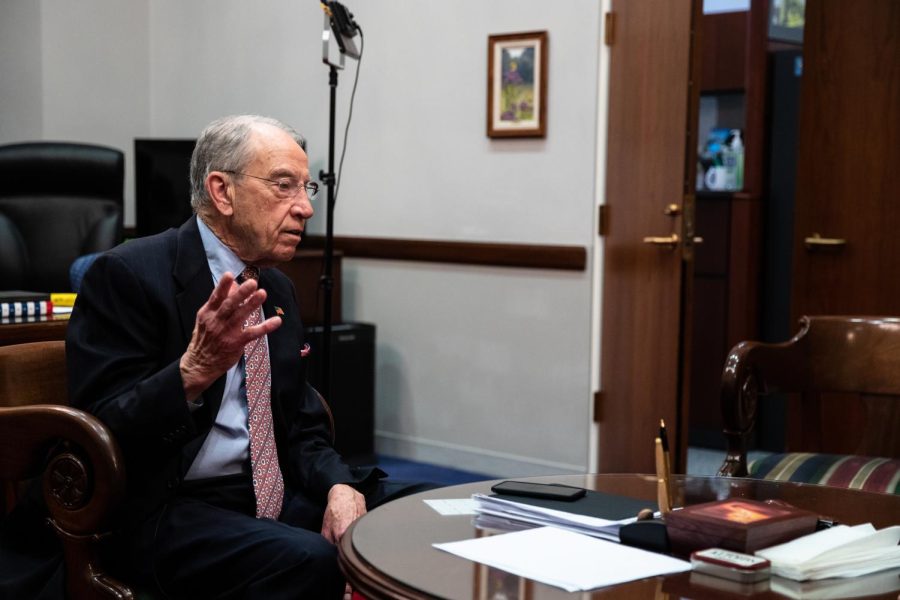Opinion | We need term limits
The age discrepancies between Congress and citizens is harmful to our democracy, laws and policies.
U.S. Sen. Chuck Grassley, R-Iowa, speaks in a Daily Iowan interview at the Hart Senate Office Building in Washington, D.C. on Tuesday, April 5, 2022.
November 1, 2022
Congress is old.
The current Congress is one of the oldest in history, and it does not reflect U.S. voters.
We need term limits and more youth participation in the political process to make Congress more representative of Americans.
There are significant discrepancies in the average age of our citizens as opposed to the average age of our representatives. According to the Kaiser Family Foundation, adults between 36-54 years old make up 25.7 percent of the U.S. population — more than any other measured age group.
Today, the average House member is 58.4 years old, according to the Library of Congress. For senators, the average age jumps to 64.3 years.
The world has changed in countless ways since many of our representatives were young, and it has caused them to be far removed from the realities of the modern day.
A prime example of our nation’s need for term limits comes from Iowa’s very own Sen. Chuck Grassley, R-Iowa. Grassley has been a member of the Senate since before Ronald Reagan was President and is now seeking his eighth term at almost 90 years old.
Grassley’s case isn’t the only one. The average age of Democrats in Congress is 68, and the average age of Republicans is 63, according to Fiscal Note. The most common birth year in the U.S. Senate is 1953.
Sen. John Thune, R-SD, argued against raising the minimum wage to $15 an hour, citing his $6 an hour wage from his restaurant job he worked when he was a teenager in the late 1970s. However, when adjusted for inflation, $6 an hour in September 1979 is equivalent to $23.87 an hour in September 2022, according to the U.S. Bureau of Labor Statistics.
Incumbency advantage is a powerful force that keeps people in office for decades on end. According to the nonprofit OpenSecrets, incumbent candidates in the Senate raised over twice as much money as their challengers, despite their challengers outnumbering them 182 to 28 in the 2022 cycle.
Representatives are making policy-based legislation on their out-of-touch worldviews. We need a Congress that understands the current realities and struggles of most Americans. We need change now.
One solution to make our lawmakers more representative is the implementation of term limits. According to U.S. Term Limits, 82 percent of Americans support term limits. There is no excuse to not get it done.
Additionally, to make Congress better represent the electorate, young people must turn out to vote.
In 2016, only 39 percent of people aged 18-29 voted in the presidential election, according to the Center for Information and Research on Civic Engagement and Learning. In 2020, that number soared to 50 percent. Arguably, this may be why the current Congress is the most diverse in its history.
While the increase was promising, 50 percent is still far below ideal.
Voting in the Nov. 8 midterm elections is important. Midterm voting numbers increased from 17 percent in 2014 to 32 percent in 2018, according to the Annie E. Casey Foundation. This year, 59 percent confirmed they plan on voting, according to Paramount Media Networks.
The goal of any democratic government should be to represent its citizens and voters as accurately as possible. If the U.S. is serious about its commitment to a more perfect democracy, we must work to make our representatives more representative in every aspect — including age.
Columns reflect the opinions of the authors and are not necessarily those of the Editorial Board, The Daily Iowan, or other organizations in which the author may be involved.















